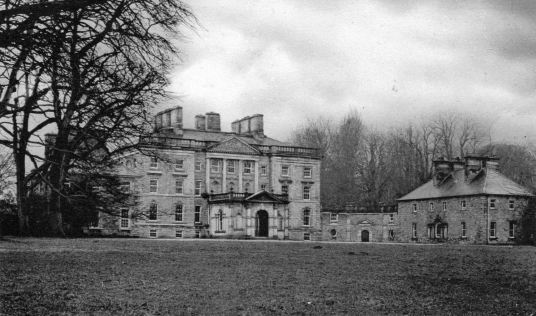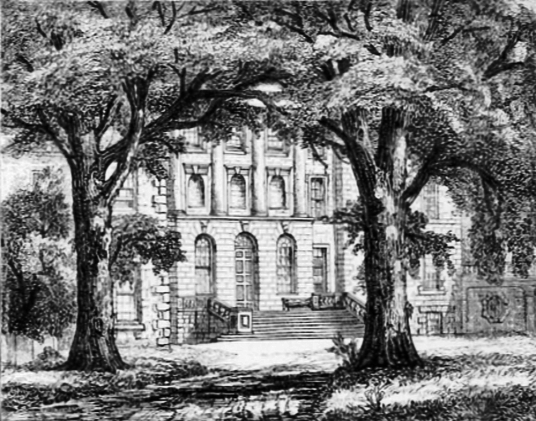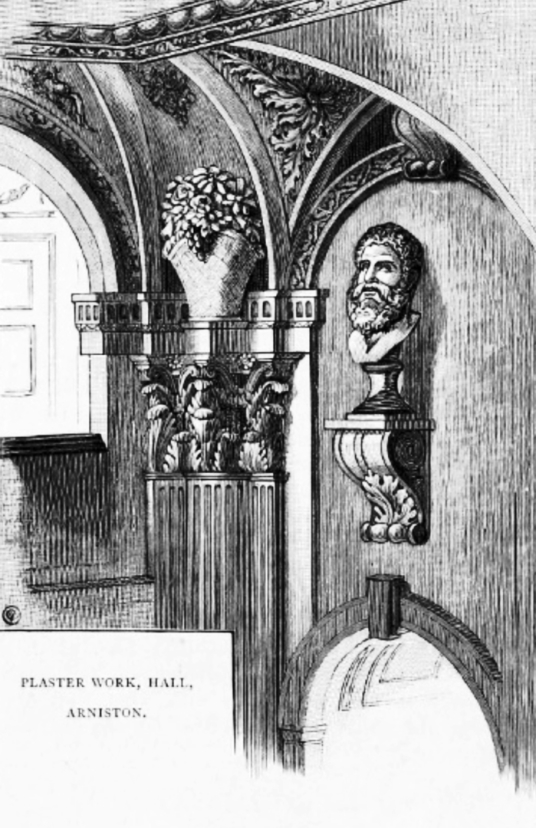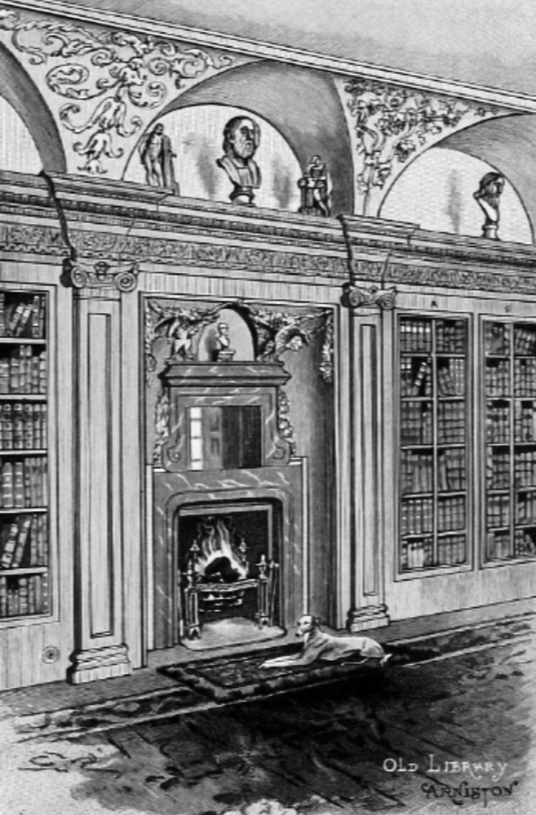Arniston House
Arniston House, a fabulous classical mansion with a homely period interior in landscaped grounds near Gorebridge in Midlothian in central Scotland and long held by the Dundas family, many of whom were judges and politicians.
Lothians: About 2 miles south-west of Gorebridge, on minor roads north off B6372, just east of River South Esk, at Arniston.
Private NT 326595 OS: 66 EH23 4RY
OPEN: Open May-Jun, guided tours on Tue & Wed starting at 14.00 and 15.30; Jul-mid Sep, Tue, Wed and Sun at 14.00 and 15.30; private groups of 10-50 accepted all year by prior arrangement;
grounds open 12.00-17.00 on open days. Holiday cottages. Weddings and events.
Tel: 01875 830515 Web: www.arniston-house.co.uk
Site of castle, with a vaulted basement, known latterly as ‘Old Arniston House’. Dating from before 1592, the old house was mostly demolished when the present house was built, an impressive symmetrical classical mansion of three storeys and a basement with lower flanking wings. The house sits in an estate of more than 6,000 acres.
Part of the tower, including what is now the Oak Room, was built into the house.
The first part of this house was designed by William Adam, with later work by John and Robert Adam. The house incorporates some of the castle. The porch was added later.
‘Arnistoun’ is marked on Blaeu’s map of the Lothians in a park, then ‘Arnestoun’ on Adair’s map of Midlothian.
The lands were held by the Knights Templars, then the Knights Hospitallers when the Templars were suppressed. At the Reformation, the property passed to Sir James Sandilands, who had been Preceptor of the order. He sold the lands to George Dundas of that Ilk, Dame Catherine Oliphant (his wife), and James Dundas (his son) for £4100 Scots in 1571. James lived here and built a substantial tower house. The family were lawyers, judges and politicans.
James was knighted by James VI, and his son, another James, was a politician and judge, and he was knighted by Charles I in 1641. His son Robert was a judge and Lord of Session as Lord Arniston and a member of parliament.
The present Arniston was built for Robert Dundas of Arniston by William Adam in 1726. Robert was Solicitor General for Scotland from 1717-20 and then Lord Advocate from 1720-25, as well as a member of parliament.
His son, another Robert, was also a judge, being Solicitor General for Scotland, then Lord Advocate, and then Lord President of the Court of Session from 1760-1787. He was also an MP. He was involved in the Douglas Cause, a struggle for the property and lands that had been held by Archibald Douglas, deceased Duke of Douglas. His son James was also a judge, Lord Advocate, MP and Chief Baron of the Exchequer in Scotland. Sir Walter Scott visited.
The house was altered in 1754 and 1877, and is still owned by the same family, now Dundas Bekker.
The family had a burial aisle, the Arniston Aisle, at Borthwick Parish Church (also see Borthwick Castle).
A section was gutted because of dry rot, and is undergoing restoration. The house retains fine plasterwork, family portraits and works by Raeburn and Naysmith, period furniture, and the garden is in a pleasant country setting.






























